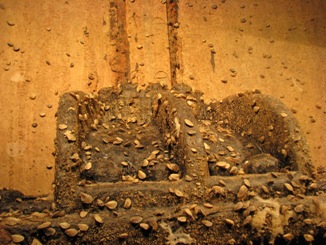Quagga Mussels on the Lower Colorado River
Hoover Dam Activities
Hoover Dam is currently the Reclamation facility least-affected by quagga mussels on the lower Colorado River. However, colonization is occurring -- inspections conducted during the 2007-2008 maintenance season revealed mussel populations in some of the smaller water supply pipes used to cool generators, compressors, transformers and other equipment at the dam. In addition, colonization on some of the damís exterior surfaces, such as intake tower walls, has also increased. The colonization that has occurred to date has not affected the dam’s power generation or water delivery functions, or required any extraordinary maintenance. To reduce the chances that increased and continuous maintenance will be needed to deal with the mussel infestation, Reclamation has developed and is implementing a proactive quagga mussel control plan. The first priority of this plan is to increase monitoring activities to pinpoint where colonization is occurring and at what rate. Accordingly, Reclamation has:
The next priority is to, within the next year, purchase and install a strainer and ultra-violet system or a 50-micron Self-Cleaning Filter on the dam’s domestic water supply line, which delivers drinking water to the facility and visitor center. The Self-Cleaning Filter has been installed and is currently being tested at Parker Dam. 
These control measures would also be installed on systems that supply cooling water to generator bearings, heat exchangers, air compressors, equipment in elevator machine rooms, office ceiling coolers and other, similar equipment. Reclamation is also considering several potential long-term control measures that could be implemented at Hoover Dam. These include:
|
Webmaster: sha-lcr-webcomments@usbr.gov
Updated: June 2008

